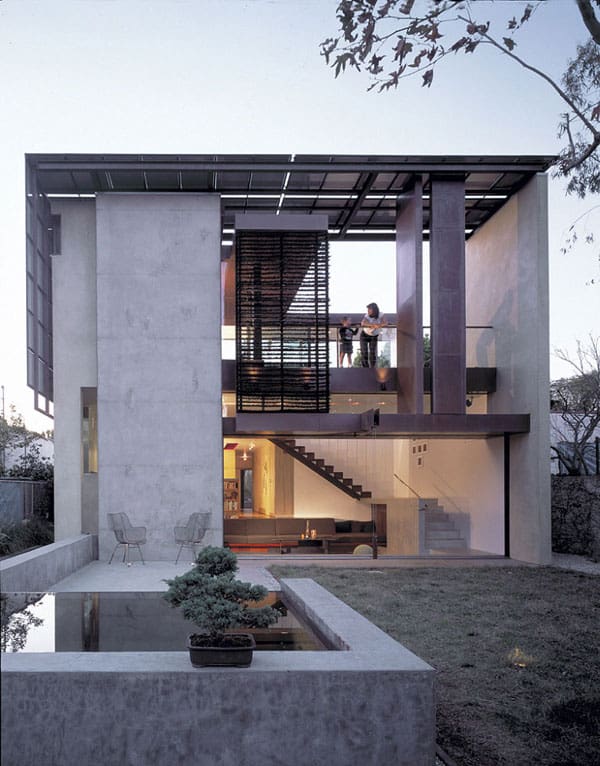
Nestled amidst a neighborhood of single story bungalows in Venice, California, the Solar Umbrella Residence designed by Brooks + Scarpa Architects boldly establishes a precedent for the next generation of California modernist architecture. Located on a 41’ wide x 100’-0” long through lot, the new addition transforms the architects’ existing 650 square foot bungalow into a total 1,900 square foot residence equipped for responsible living in the twenty-first century.
Inspired by Paul Rudolph’s Umbrella House of 1953, the Solar Umbrella provides a contemporary reinvention of the solar canopy – a strategy that provides thermal protection in climates with intense exposures. In establishing the program for their residence, which accommodates the couple and their one child chose to integrate into the design, principles of sustainability. The architects carefully considered the entire site, taking advantage of as many opportunities for sustainable living as possible. Passive and active solar design strategies render the residence 100% energy neutral.
Taking advantage of the unusual through lot site condition, the addition shifts the residence 180 degrees from its original orientation. What was formerly the front and main entry at the north becomes the back as the new design reorganizes the residence towards the south. This move allows the architects to create a more gracious introduction to their residence and optimizes exposure to energy rich southern sunlight. A bold display of solar panels wrapping around the south elevation and roof becomes the defining formal expression of the residence. Conceived as a solar canopy, these panels protect the body of the building from thermal heat gain by screening large portions of the structure from direct exposure to the intense southern California sun.
Metal stud construction replaces conventional wood framing. Recycled steel panels, solar powered in-floor radiant heating, high efficiency appliances and fixtures, and low v.o.c. paint replace less efficient materials. Decomposed granite and gravel hardscape, including a stormwater retention basin are used in place of concrete or stone. Unlike their impervious alternatives, these materials allow the ground to absorb water and in turn, mitigate urban run-off to the ocean. Drought tolerant xeriscaping compliments the textures and palette of the building while providing a low maintenance, aesthetically appealing landscape.
A cast in place concrete pool provides a strong landscape element and defines the path to the front entry. Upon reaching the entry, the pool cascades into a lower tier of water that penetrates and interlocks with the geometry and form of the residence. In a move that reinvents the welcome mat, stepping stones immersed in the water create an initiatory rite of passage into the residence as the visitor is invited walk across water. The distinction between outside and inside is once again blurred.
The kitchen, which once formed the back edge of the residence, opens into a large living area, which in turn, opens out to a spacious front yard. An operable wall of glass at the living area delicately defines the edge between interior and exterior. Taking cues from the California modernist tradition, the architects conceive of exterior spaces as outdoor rooms.
The master suite on the second level reiterates the strategy of interlocking space. Located directly above the new living area, up a set of floating, folded plate steel stairs, the bedroom strategically opens onto a deep covered patio which overlooks the garden.
Photos: Marvin Rand

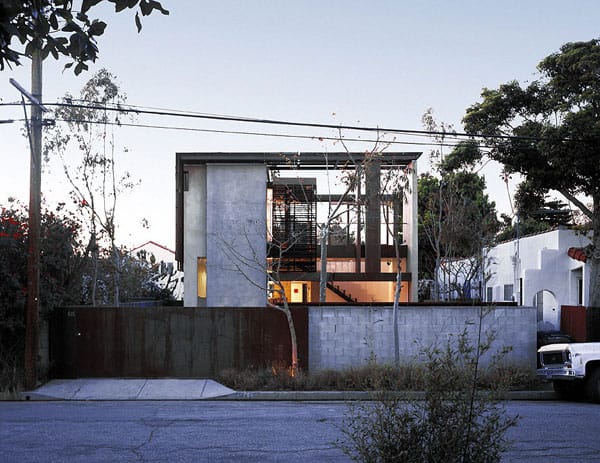
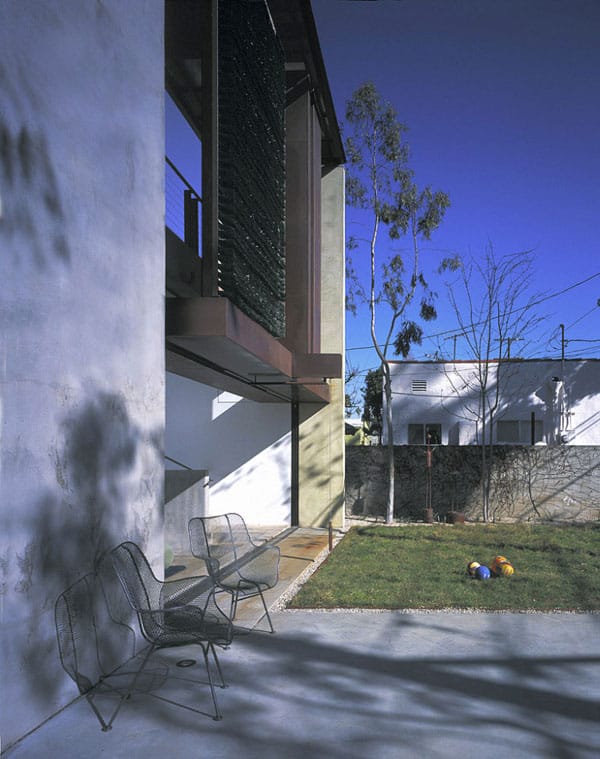
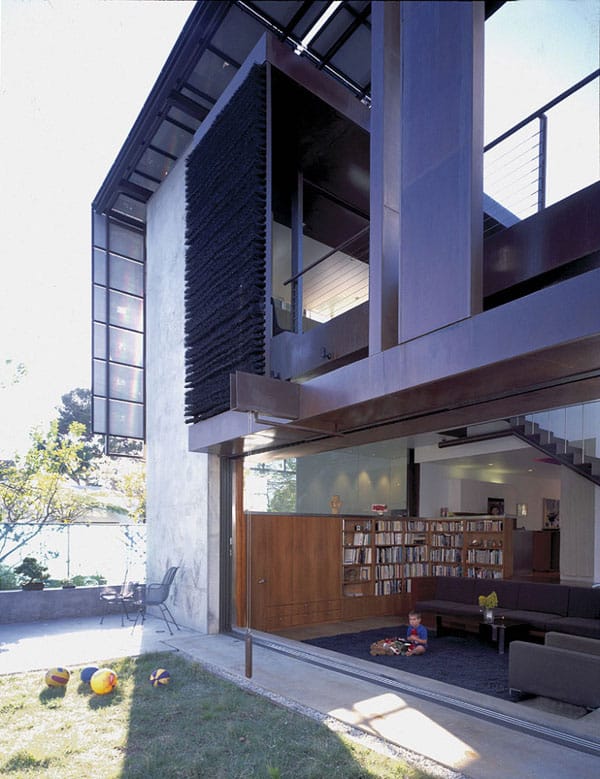
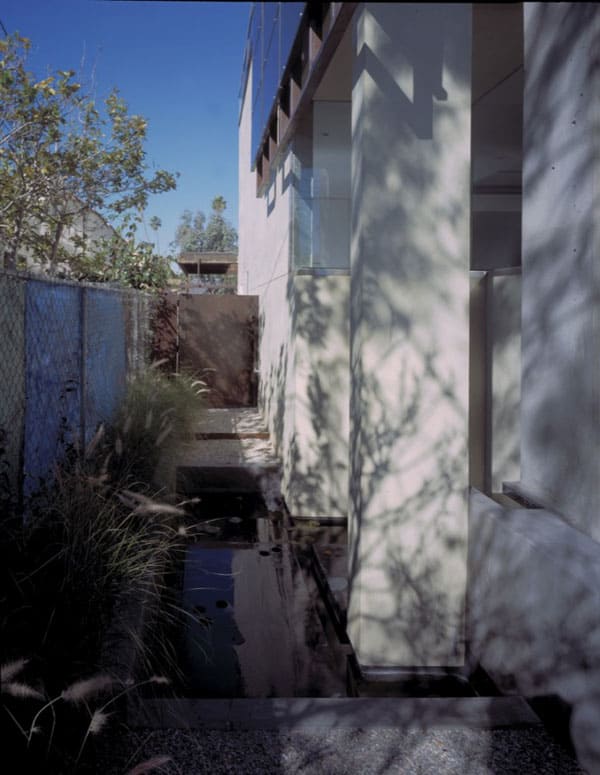

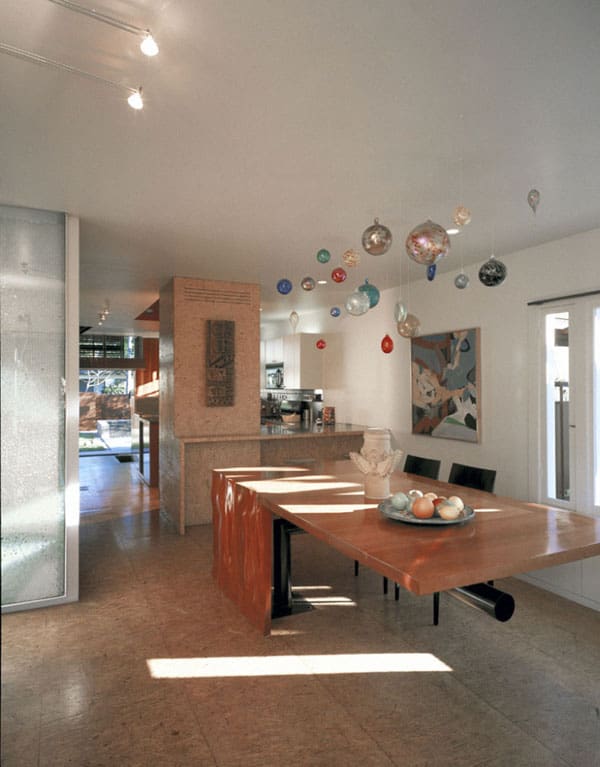


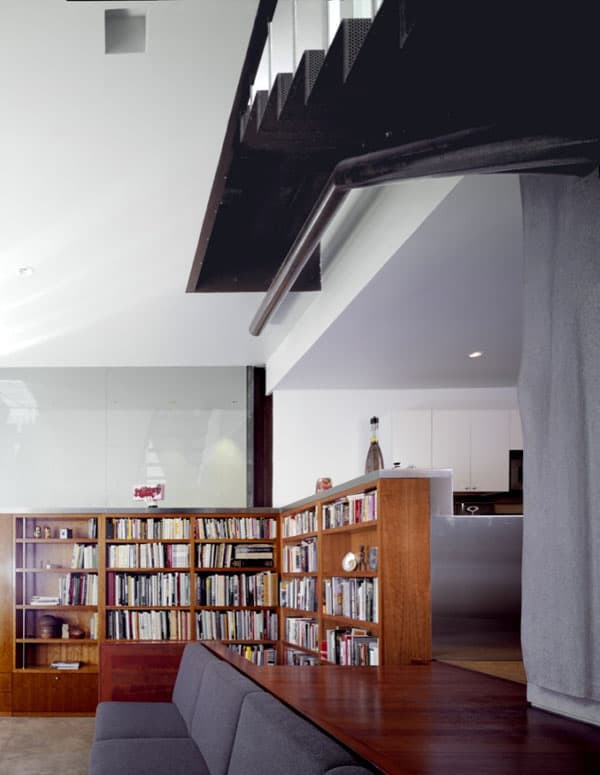
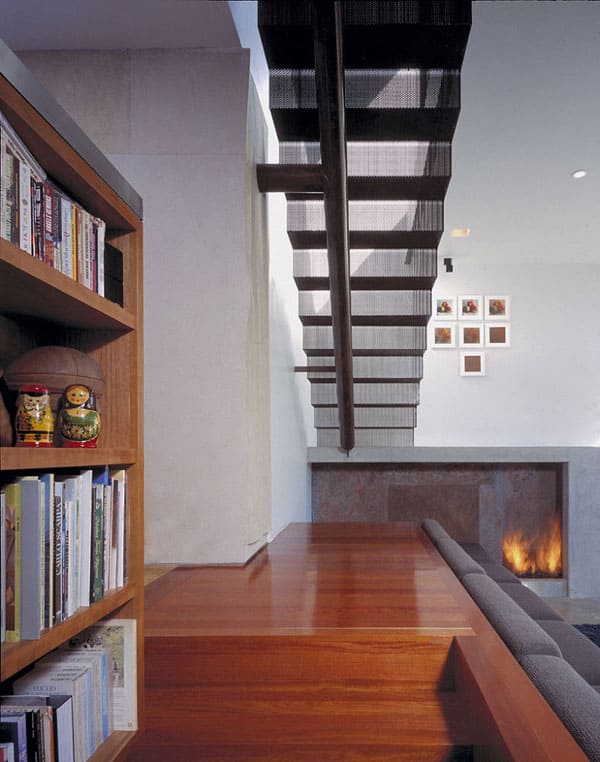
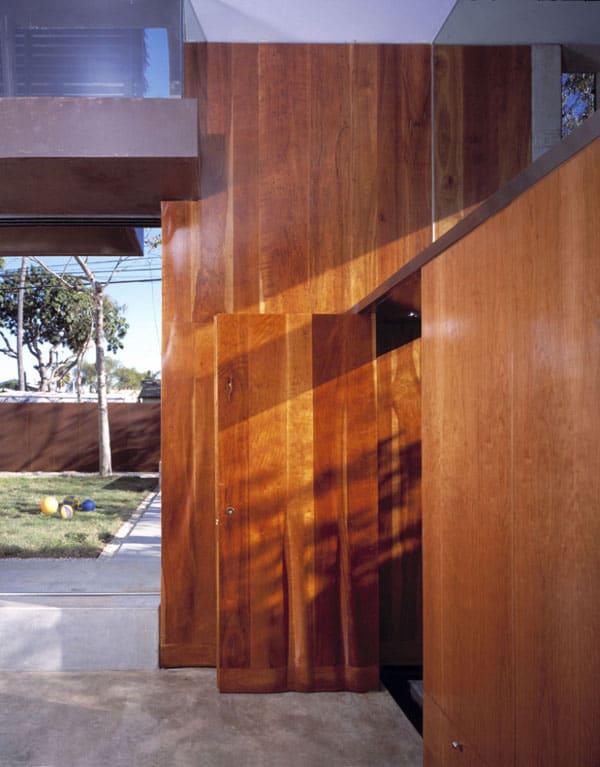
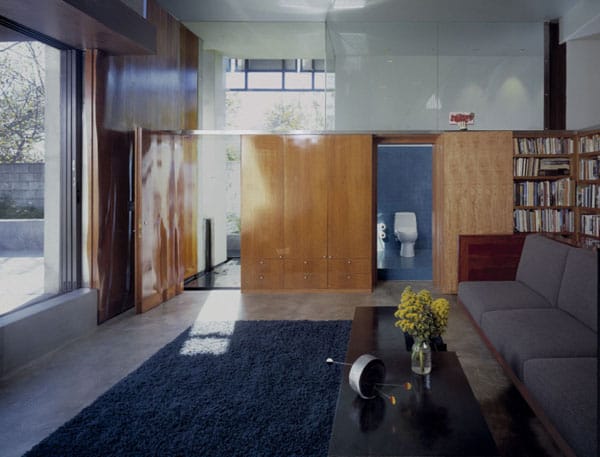
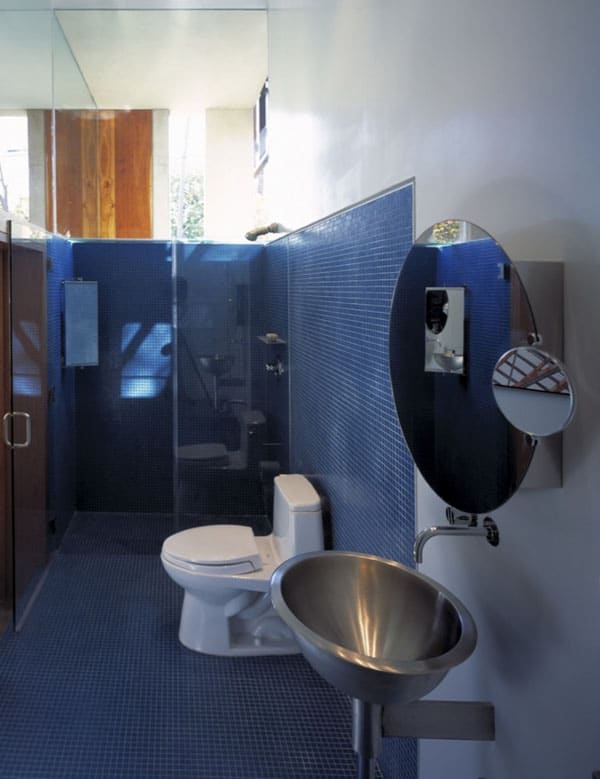
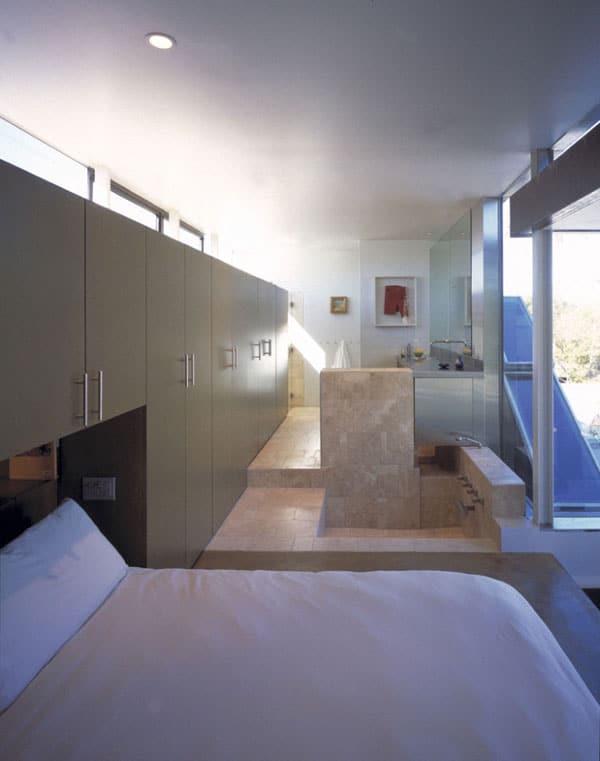
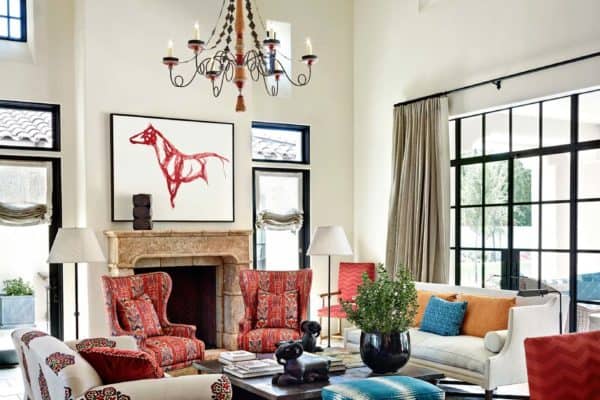

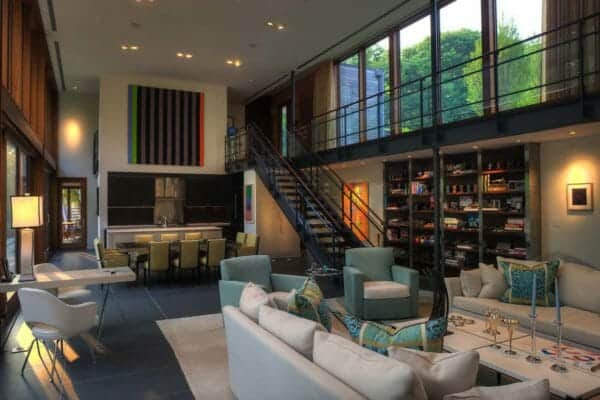
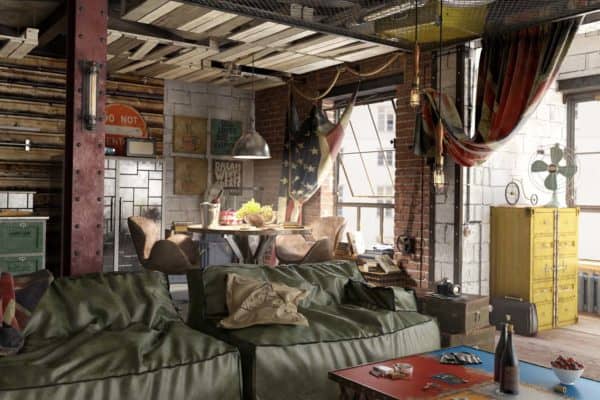
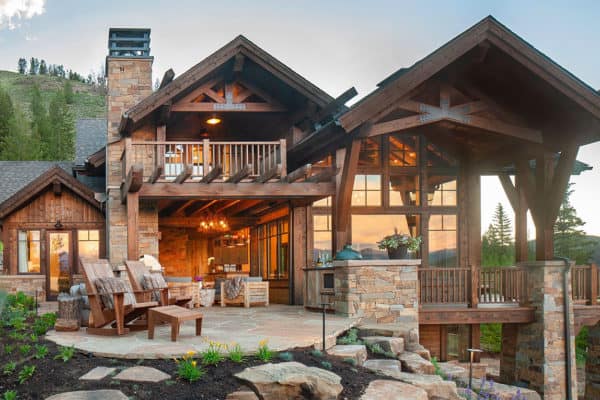

0 comments